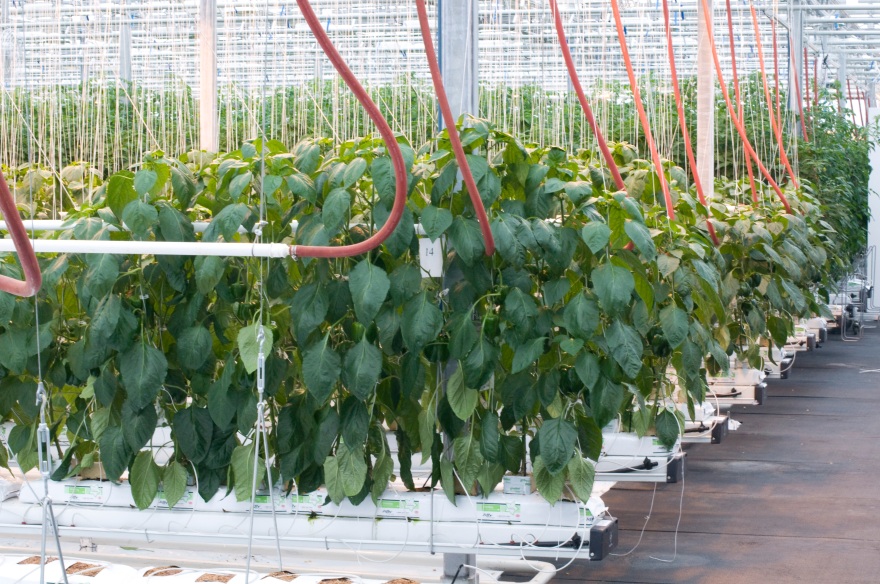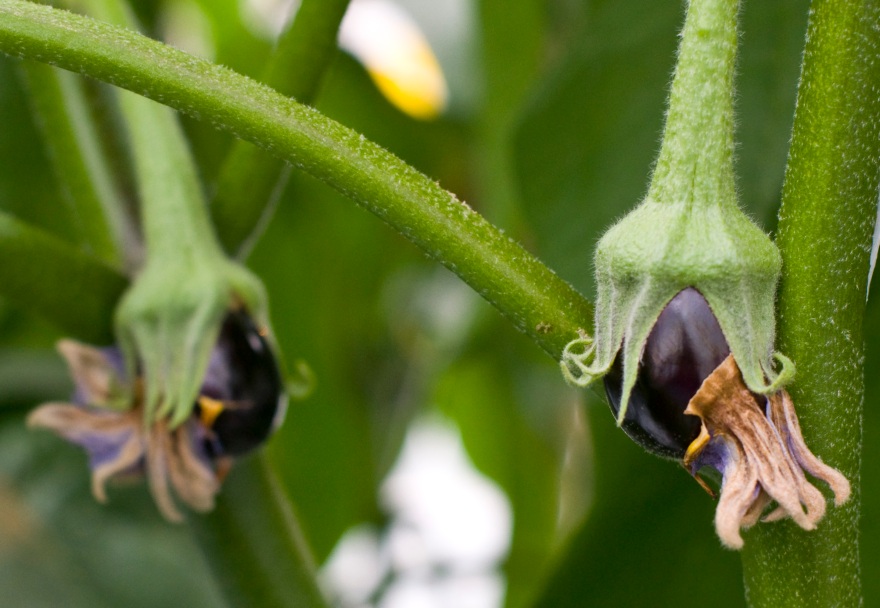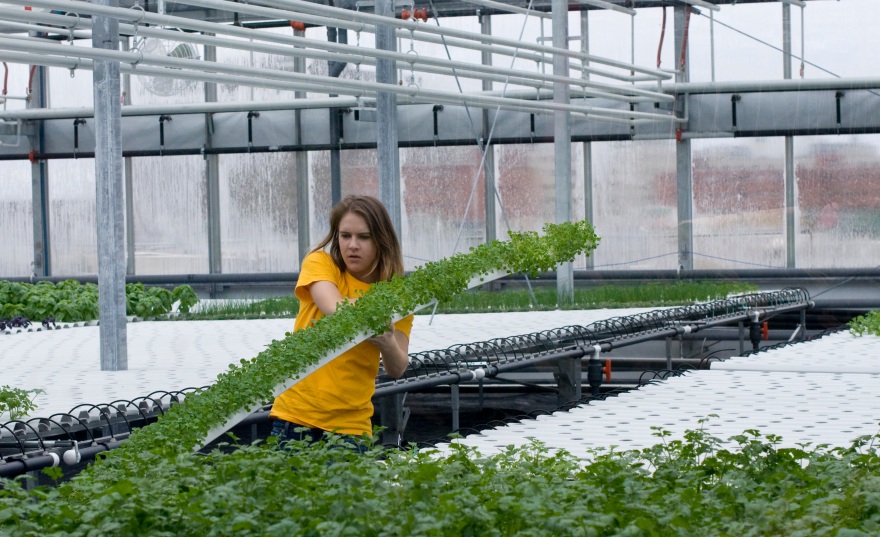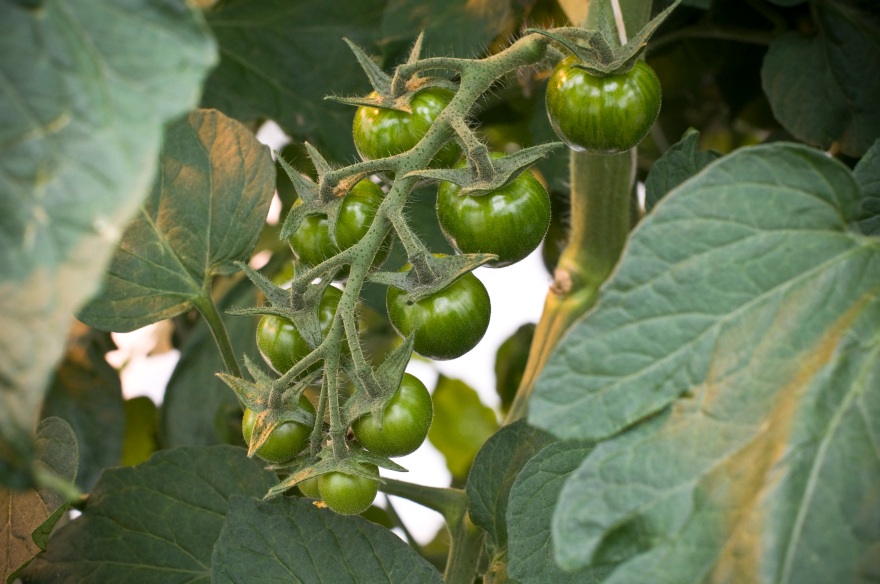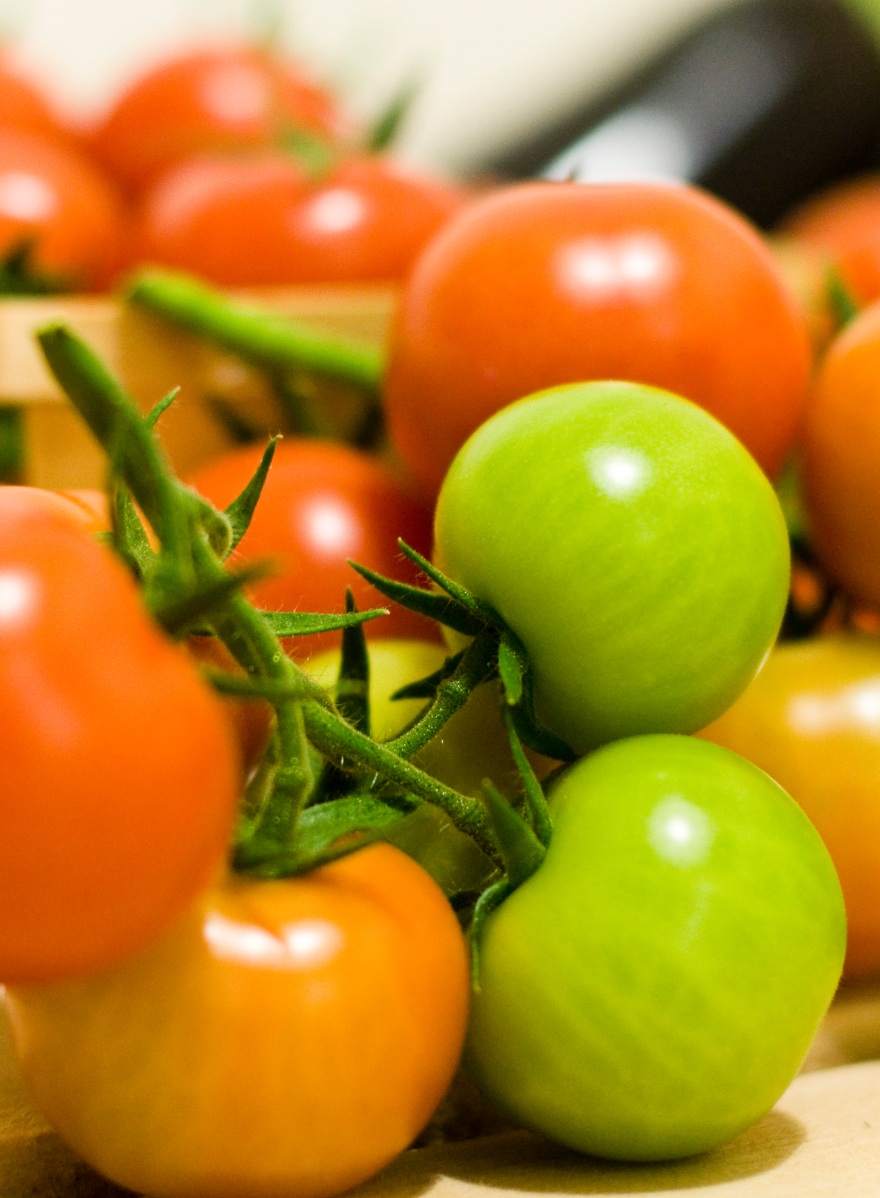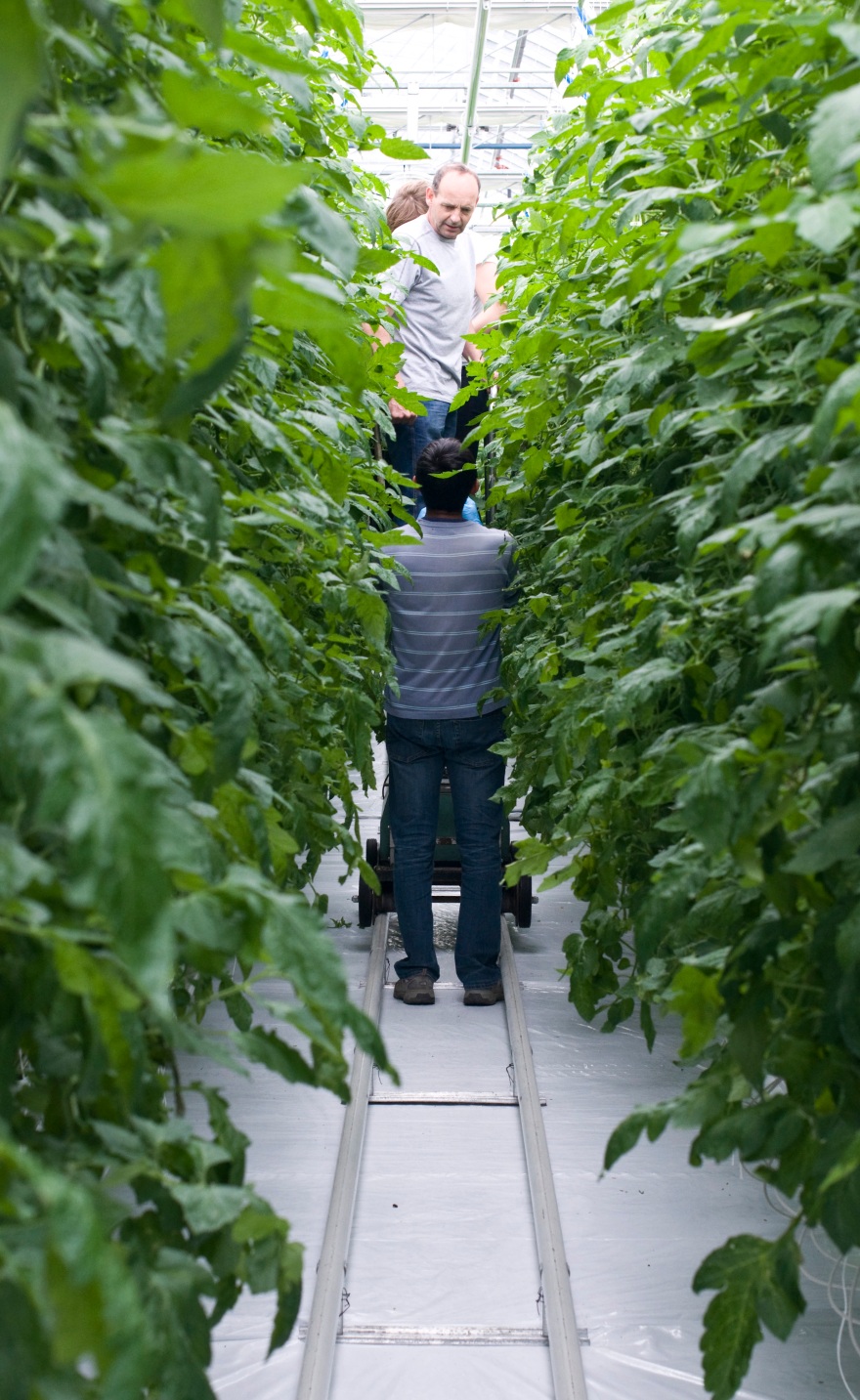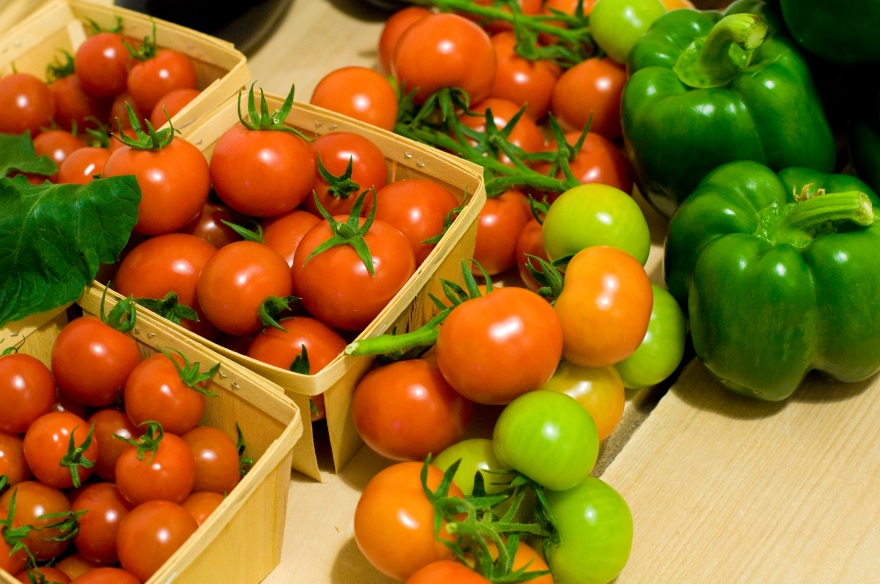
Ladies and gentlemen, today I have something a little different for you. During December of last year, I became aware of a project taking place in Montreal that was being developed by LUFA farms. The company was in the midst of building the world’s largest urban commercial green house. Just north of the city’s downtown, they found an old building upon which they went about building a 31 000 sq feet green house that would start producing herbs and veggies in late March.
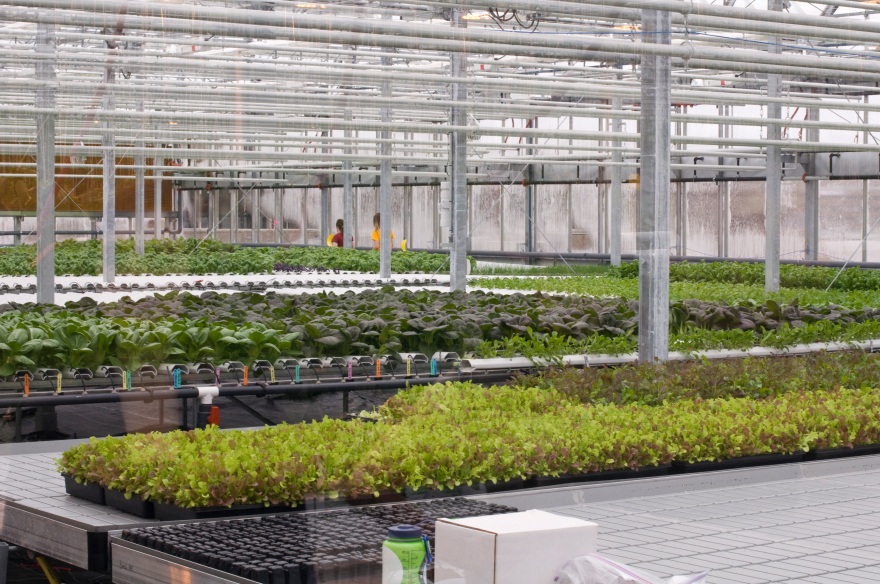
On Monday the 18th of April, I was invited by my friend Cai Rintoul, who first informed me about the project and who is now acting as a consultant for the company, to an information session with chefs and restaurateurs from around the city. We gathered at the green house and were given a tour of the premises, explained the functioning and the philosophy behind the project and LUFA farms, and were invited to taste some of the produce.
At the core of the project is a vision of responsible and environmentally friendly living. An urban greenhouse offers a number of advantages that our regular food system is unable to provide. First of all, LUFA’s goal is to distribute produce that is as fresh as possible. When fully functional, they will have baskets of their veggies and herbs distributed every day of the week to restaurants and to different pick up centers where regular customers who have subscribed to their service can get their weekly supplies. What’s more, when the distribution network will be properly organized, there will be zero waste of vegetables. A bonus of getting the daily fresh produce so fast to its customers is that they will be able to guarantee the highest possible nutrient value. Even in the best systems, rarely do we find produce that is less than 3 or 4 days old in our markets and grocery stores(if not much more…). LUFA provides a local and consistent source of fresh vegetables year round, whether its in the winter or summer.
The greenhouse is a complicated but very efficient and sustainable system for vegetable growth. The water used is filtered and re-used, the energy necessary is minimal and the system is highly productive. They eventually plan on using the bio matter(stocks, leaves and so on) of the plants to produce heat for future greenhouses. The air quality is filtered and no pesticides or chemicals are needed. A lot of its heat is produced by the plants themselves, and a well organized greenhouse can offer carefully controlled growth conditions that will maximize the efficiency of the plants therein. In the summer the plants will help cool the space and that of its surroundings. What’s more, the greenhouse is also a positive structure for the building on which it exists. The owner of that building will be saving a great deal in heating and cooling throughout the year.
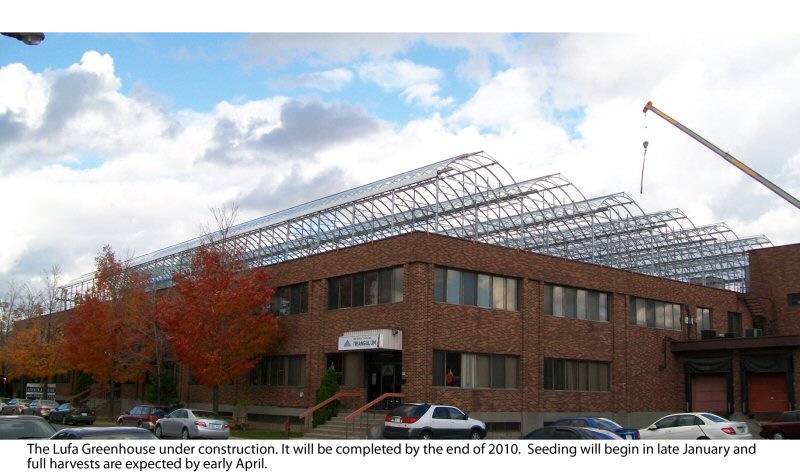
LUFA’s vision is one of “a city of rooftop farms…“. Not the endeavour of a group of hippies, LUFA is also a company with an ambitious business model. It took a very large investment and 4 years of research and tests to develop the project. The risks are big but the rewards potentially much greater, and I believe that would be a good thing for society. Imagine the energy savings that would take place if we were to have most of our own produce grown within a city’s boundaries and picked fresh daily. While there are certainly restrictions as to what they can grow, the benefits outweigh the negatives. Greenhouses of the sort are also quite flexible; able to offer different produce to different communities while being able to change the production of certain products very rapidly. When I visited, the plants were less than 2 months old and were already producing. The eggplant for example was thriving and the tomatoes were as well. LUFA will also be able to tweak the flavors of its products.
After our information session we were presented with a variety of greens, herbs and tomatoes to try. Everything was freshly picked and very flavorful. Certain items, such as the coriander(cilantro) still need some work as it was rather bland, but the tomatoes were wonderfully sweet, the Persian arugula was bright and spicy, as was the watercress. The green peppers were crisp and flavorful and the eggplants were not bitter at all. As I walked out I marveled at the possibilities of such a project. This 31000 sq feet greenhouse will be able to serve baskets to about 2000 customers a week. LUFA is already thinking about a 100000 square feet space. If this works, eventually, they’ll be able to develop greenhouses following the subway networks of large cities and could become a great source of local and pesticide free produce for urbanites. When I think of the rapid rise of urban development in developing countries, that is when I become especially excited. I’ve seen and followed the changes that have and continue to take place in China for example. Things are happening unconsciously fast, and they will need to properly plan their development for sustainable living. LUFA farms offers an opportunity for environmentally progressive development and that’s really cool.
Here are more pictures:
